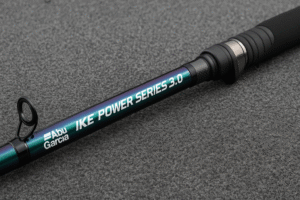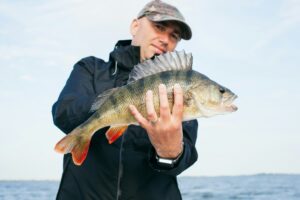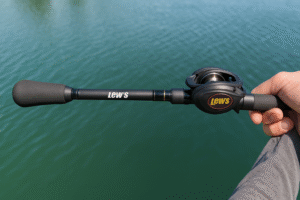Saltwater Fishing for Beginners: What You Need to Know
Saltwater fishing is a popular and rewarding activity that offers the chance to connect with nature, enjoy the outdoors, and potentially catch a variety of exciting fish species. For beginners, however, the world of saltwater fishing can seem overwhelming.
With so many variables to consider—such as gear, techniques, locations, and safety—it’s easy to feel unsure about where to start. This guide aims to simplify the process and provide you with the essential knowledge you need to begin your saltwater fishing journey with confidence.
Essential Gear for Saltwater Fishing
One of the first things to understand about saltwater fishing is the importance of having the right gear. Unlike freshwater fishing, saltwater environments are harsh and can quickly damage equipment that isn’t designed to withstand the corrosive effects of saltwater.
Rod and Reel: A good starting point is a medium-action spinning rod, typically around 7 feet in length, paired with a 2500-4000 size spinning reel. This setup is versatile enough to handle a variety of inshore species, such as redfish, speckled trout, and flounder.
When choosing a rod and reel, look for materials that are resistant to corrosion, such as graphite or composite for the rod and brass or stainless steel for the reel.
Fishing Line: The fishing line you choose is another critical factor. Braided line is a popular choice for beginners because of its strength, sensitivity, and casting distance. A 20-pound braided line is a good starting point, and it can be paired with a 2-foot fluorocarbon leader to improve knot strength and reduce visibility.
Fluorocarbon is less visible underwater, which can make a significant difference when targeting wary fish. Monofilament line is another option, particularly for trolling, as its stretchiness helps absorb shocks when a fish strikes.
Terminal Tackle: In addition to your rod, reel, and line, you’ll need a selection of terminal tackle. This includes hooks, lures, weights, and floats. Circle hooks, typically in sizes ranging from 1/0 to 5/0, are ideal for live bait because they are designed to hook the fish in the corner of the mouth, reducing the risk of deep hooking.
J-hooks, on the other hand, are better suited for artificial lures. When it comes to lures, a variety of options can help you target fish at different depths and in different conditions.
Jigs, soft plastics, and topwater lures are all excellent choices for beginners. Weights, such as pyramid sinkers, are useful for surf fishing, while popping corks can help keep live bait at the desired depth.
Safety Gear: Safety is another important consideration when it comes to saltwater fishing. The ocean can be unpredictable, and it’s essential to take precautions to ensure your safety. Always wear a life jacket, especially if you’re fishing from a boat or kayak. Polarized sunglasses are another must-have item, as they not only protect your eyes from the sun but also help you see beneath the water’s surface, making it easier to spot fish and underwater structures. Sunscreen and protective clothing are also essential to guard against the sun’s harmful rays, which can be particularly intense when reflected off the water.
Choosing the Right Location
Once you have your gear and safety equipment sorted, the next step is to choose the right location. Saltwater fish are highly mobile, and their presence can vary depending on factors such as tides, weather, and the time of day.
- Public Piers and Shorelines: One of the easiest ways to find a good fishing spot is to start at public piers or popular shorelines where other anglers are fishing. These locations are often productive and provide an opportunity to observe and learn from more experienced fishermen.
-
Fish-Attracting Structures: If you’re looking to explore beyond the crowds, it’s helpful to understand the types of structures that attract fish. Jetties, reefs, drop-offs, and channels are all prime locations where fish are likely to congregate. Using nautical charts or apps like Navionics can help you identify these areas and plan your fishing trip accordingly.
-
Tides and Weather: Paying attention to tides and weather conditions is also crucial. Fish are generally more active during tidal changes, particularly incoming tides, and low-light conditions such as dawn and dusk are often the best times to fish.
Basic Techniques for Beginners
When it comes to techniques, there are a few basics that every beginner should master.
-
Casting: Casting is one of the most fundamental skills in fishing, and it’s important to practice until you can do it accurately and consistently. To cast, hold the rod horizontally, open the bail, and swing the rod tip behind you. As you swing the rod forward, release the line and aim for your target.
-
Retrieving: Once your bait or lure is in the water, the next step is retrieving it. Varying your retrieve speed and adding occasional twitches can help mimic the movement of prey and entice fish to strike.
-
Bottom Fishing: Bottom fishing is another effective technique, particularly for species that feed near the seabed. To bottom fish, let your bait sink to the bottom and then lift and drop the rod tip to keep the lure in contact with the seabed. This technique works well with live bait, such as shrimp, minnows, or crabs, which can be stored in an aerated bait bucket to keep them lively.
-
Using Live Bait: Using live bait is one of the most effective ways to catch saltwater fish, but it’s important to handle it properly. Keep your bait in a well-aerated container to ensure it stays alive and active, and use the appropriate hooks and rigs to present it naturally. Circle hooks are a good choice for live bait because they are designed to hook the fish in the corner of the mouth, reducing the risk of injury and making it easier to release the fish if needed.
Safety and Conservation Practices
While catching fish is undoubtedly exciting, it’s also important to prioritize safety and conservation.
-
Wear a Life Jacket: Saltwater fishing can be physically demanding, and accidents can happen quickly, especially on the water. Always wear a life jacket, and be mindful of your surroundings, particularly if you’re fishing from a boat or kayak.
-
Handle Fish Carefully: Handling fish carefully is another important aspect of conservation. Wet your hands before touching fish to protect their slime coat, which helps prevent infections, and use pliers to remove hooks quickly and efficiently.
-
Catch and Release: Practicing catch and release is another way to contribute to the sustainability of fish populations. If you’re not planning to keep the fish you catch, use barbless hooks to make it easier to release them, and minimize the time they spend out of the water.
-
Dispose of Waste Properly: Properly disposing of waste, such as fishing line and bait containers, is also essential to protect the environment and ensure that others can enjoy the same fishing spots in the future.
Saltwater fishing for beginners doesn’t have to be intimidating. With the right gear, knowledge of fishing spots, and basic techniques, you can enjoy a successful and enjoyable experience. Remember to prioritize safety, respect the environment, and learn from each outing. Whether you’re casting from the shore or exploring deeper waters, saltwater fishing offers endless opportunities for adventure and discovery. By following this guide, you’ll be well-prepared to embark on your saltwater fishing journey and create lasting memories on the water.





